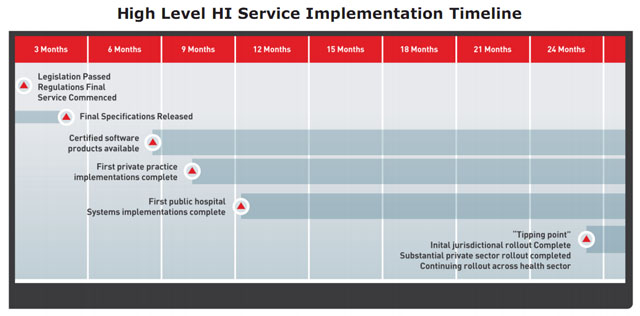The nation’s peak e-health group has released a comprehensive set of documents that outline how the Federal Government’s $466.7 million electronic health record/health identifier project will be implemented over the coming years, and how it will work in practice.
The project is slated to see all Australians allocated a unique identification number which will enable medical records to be transferred – with their consent – between medical providers such as hospitals and general practitioner doctors electronically, rather than through paper records, as is often the case today.
However, so far details on how it will be implemented have been scant.
In the documents, the National E-Health Transition Auithority said there would need to be three complementary programs of work that would need to be undertaken for the project to move forward.
Firstly, a change management program would need to carried out that would depend on what NEHTA said was the “nature of the healthcare business” and the current state of its IT systems. In this program, industry peak bodies will be involved as well as other organisations.
Secondly, NEHTA said medical software vendors would need to be provided with assistance so that their products could communicate with the healthcare identifier service. Well-designed specifications would need to be provided to assist with their implementation of standards.
Lastly, NEHTA said it would be necessary to identify and establish early adopter sites that could demonsrate the use of the technology in supporting outcomes. The organisation is planning to collaborate with key organisations that would be prepared to get involved early – and will produce lessons learned research and toolkits from the process.
Work has already begun at several early stage rollout sites for the project, with Health Minister Nicola Roxon announcing during the recent election campaign that three GP networks would start to implement the technology. The three GP networks will be GPpartners in Brisbane, GP Access in New South Wales’ Hunter Valley and the Melbourne East GP Network in Victoria.
“This is an important step forward in allowing online access to health records for each Australian that chooses to,” said Roxon at the time, noting the networks were chosen because they already have strong e-health capability within their communities.
NEHTA’s plan also includes a strong focus on communicating the system to the public — communication being an area the organisation has been faulted on in the past. And work has also started in a concrete fashion on the technical side of the project — several weeks ago the organisation went to market for a supplier to deliver what it called a “National Authentication Service for Health” (NASH), which will be a core component of the project.
The full NEHTA documentation is available online.
Image credit: NEHTA


Let me guess… this means we have to remember our Medicare number, our private health insurance number AND another “key” health number as well?
I hope they have enough sense to integrate some of our multitude of identity numbers, but I think there is great utility in a health-info network, especially if the writers of “custom” GP software get on board.
Comments are closed.